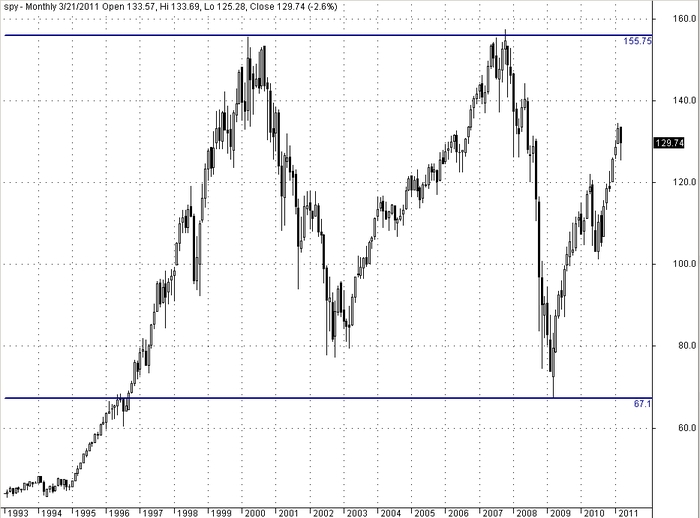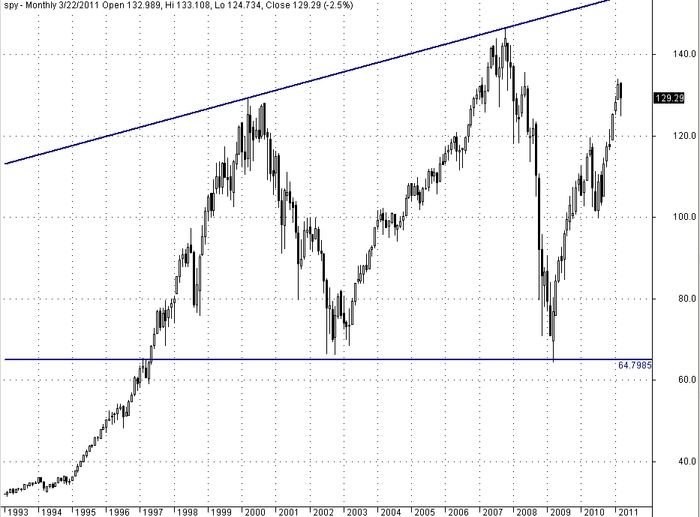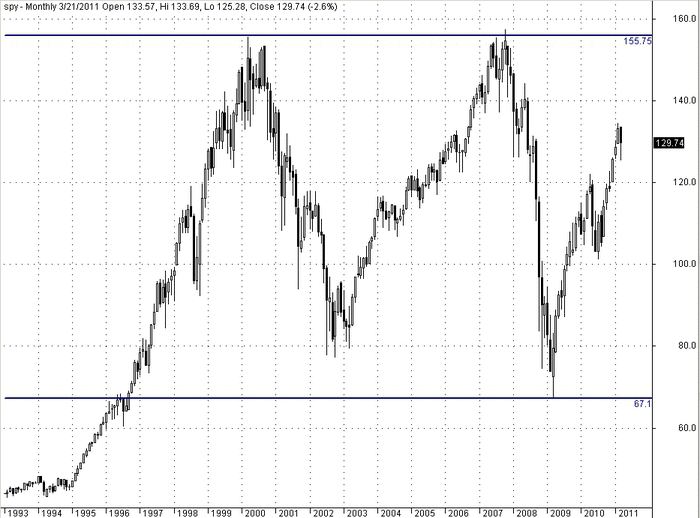This is an article about the impact of data adjustments on technical analysis studies and backtesting, as well as, of the pitfalls of trading system development due to incompatibilities and/or conflicts between data series and analysis techniques. Use of the wrong data series for technical analysis and backtesting can under certain circumstances produce wrong, even chaotic results, as I will show with specific examples. This concerns especially technical traders of ETFs and stocks with dividend payments and splits that are often used to adjust the price series.
This first post was motivated by frequent emails I get from users of Price Action Lab who trade ETFs and stocks. Someone emailed me a link to a forum the other day where a member – supposedly and experienced trader – was advising people to use the adjusted close for calculating the historical performance of a trading strategy. Of course, with price series that use the adjusted close, the open, high and low must be also adjusted accordingly. This is accomplished by calculating a parameter, which is equal to the adjusted close divided by the close of the day that a dividend payment or split took place. All the price fields are then multiplied by this parameter. The volume is divided by this factor instead. The new series that results is adjusted for dividends and/or splits. I think the technique is straight forward but is it appropriate for technical analysis and backtesting? This is the question I will try to answer in the first two posts. The remaining posts will deal with more advanced issues regarding price series adjustments.
A picture is worth a thousand words
Instead of trying to tackle this problem mathematically here, something I did a few years ago, it is better to show a couple of pictures. Math can provide the answer but it is a complicated route and I think in this particular case, common sense is the best tool for dealing with the problems one faces when using adjusted price series for ETFs and stocks.
This is a monthly chart of SPY since inception with no adjustments for dividends:
Next is the monthly chart of the same ETF with prices adjusted for dividends:
Below is an animation that better illustrates the effect of the adjustments on prices:
It can be seen that the effect of a series of adjustments due to dividend payments on the price series is a non-linear compression from current to past data. As a result, the double top in Figure 1 formed by the two peaks in 2000 and 2007 disappears in Figure 2 and instead the chart shows an upwards trending market. Specifically, the most recent peak in 2007 is displaced downwards from around $155.75 to near $142 and the older peak of 2000 is displaced near $114.
It is clear that the chart in Figure 2 is not appropriate for technical analysis because reality has been distorted a posteriori, meaning that past data were changed based on future data. If this is not clear at this point based on the chart displays in Figures 1 and 2, it will become clear in the second post in this series which will include specific results from the performance of trading systems using unadjusted and adjusted data.
So, what is the chart in Figure 2 good for? I argue that this type of chart should not be used for technical analysis or backtesting but it is only good for calculating buy and hold performance. Actually, adjusted series are useful for buy and hold calculations because they include dividends and in some cases their impact on performance is significant. I have already used the adjusted close series in this post to calculate buy and hold returns.
About splits
Splits should be accounted for by adjusting data accordingly but the technical picture does not change, just older data are shifted so that there is no gap after the date of split. Thus, technical analysis and backtesting should work with ETF and stock data that account for splits but not for dividends, except when the buy and hold performance is calculated.
Check back for the next post in the series next week!
Charting program: Amibroker (Charts created with AmiBroker – advanced charting and technical analysis software. http://www.amibroker.com/”)
Related posts
Chaos in Technical Analysis and Backtesting – Part II: Split-adjusted Data
Chaos in Technical Analysis and Backtesting – Part III: Examples
Disclaimer: The author is not a financial advisor and does not recommend the purchase of any security or advise on the suitability of any trade or investment in any timeframe. ETF, stock, futures, forex and options trading and investing involves substantial financial risks and can result in total loss of capital. If investment or other professional advice is required, a licensed professional should be consulted.









